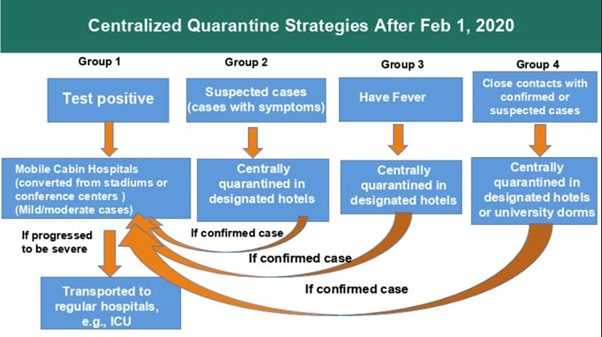
Since I made this thread I get asked often: "what should we do?". (Lockdown? Close schools? Protect the elderly? Nothing?) Usually, there's a strong political or moral angle to the question and I’m lucky I don’t have to make the choices. But I believe there’s another way.
Thread
Thread
https://twitter.com/jeuasommenulle/status/1320682084973858816
Some have been discussing ways to reduce R since the beginning of the pandemic (@AdamJKucharski or @gianlucac1 - follow them!) and I believe they are right. This is where we can make progress.
How?
With no public intervention, R is around 3.4. What can we do from there?
How?
With no public intervention, R is around 3.4. What can we do from there?
I’d like to share two major ideas:
The 1st is Adam’s model on social contacts and attack rates which is a very good approach to estimate how social rules and trace/test/isolate strategies impact R
The 2nd is what happened in Wuhan.
The 1st is Adam’s model on social contacts and attack rates which is a very good approach to estimate how social rules and trace/test/isolate strategies impact R
The 2nd is what happened in Wuhan.
Before that, R went down but nothing like the effect they got after implementing that approach, as these estimates show. 

And believe me, what they did is nothing like the Western approach to trace/test/isolate. It's an entirely different approach.
We are in a mild social distancing/testing/isolating approach. If you look at Adam’s model, you’ll see that in the best-case scenario, with more work from home (30%) and an OK-ish tracing strategy you get to 0.8-ish R.
But I played with the parameters in Adam's model and as soon as tracing becomes shitty, (e.g. 50% efficiency) then R goes above 1, as high as 1.2.
In an email I sent at work back in MAY, I said R would go back to 1.21 after the lockdown… we’re at 1.2.
In an email I sent at work back in MAY, I said R would go back to 1.21 after the lockdown… we’re at 1.2.
The thing that works particularly well in the Chinese strategy is that you isolate people BEFORE you test them and tracing is mandatory with significant fines if you don’t follow the rules. Those two extra days make a HUGE difference when you model R.
Those so-called hospitals built in one week (remember, they made us laugh) were not proper hospitals. They were isolation centers. With this approach, the model suggests R would go to 0.5, with no lockdown and schools open.
THIS is what we need (or a vaccine).
THIS is what we need (or a vaccine).
Yes, the strategy is an infringement of our liberties and yes it stinks.
But if the other choices are having an entire generation of children not going to school or the elderly locked down for months, or even worse (high mortality), the choice is easy.
But if the other choices are having an entire generation of children not going to school or the elderly locked down for months, or even worse (high mortality), the choice is easy.
So please, give up on your digital scare and "I don't want the government to have my data" mantra and go for it.
Last thing: most of you believe the Chinese cook the data and that’s why they don’t have Covid anymore.
The uncomfortable truth might be that they have a strategy that works but we’re too dumb to implement.
The uncomfortable truth might be that they have a strategy that works but we’re too dumb to implement.
• • •
Missing some Tweet in this thread? You can try to
force a refresh




